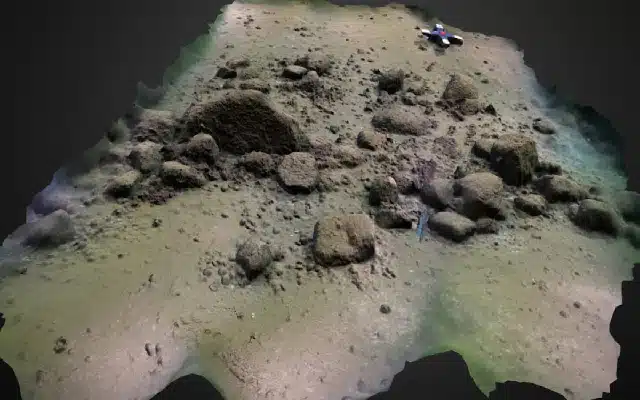In a groundbreaking discovery along the German Baltic coast, researchers have stumbled upon what could be the oldest known human-made megastructure in Europe, challenging historical narratives. The submerged wall, named the “Blinkerwall,” was unexpectedly identified during a student research expedition, utilizing sonar technology.
Spanning nearly a kilometer, the Blinkerwall is composed of 1,400 smaller stones intricately connected to 300 massive boulders, indicating a sophisticated construction effort by a sizable community. The colossal size of some boulders suggests advanced Stone Age building techniques, surpassing the capabilities of individual labor.
Experts speculate that the wall, now submerged 21 meters underwater, was constructed around 11,000 years ago on dry land, possibly near a lake or marsh. The gradual rise in sea levels over millennia eventually submerged the structure, inadvertently preserving it for modern discovery.
While the purpose of the Blinkerwall remains a puzzle, its dimensions and location hint at a potential function in hunting large prey, akin to ancient traps found elsewhere. Researchers anticipate that further exploration will unveil the purpose of the structure and provide insights into the lives of the Stone Age communities behind its construction.
This finding has the potential to reshape our understanding of early European societies, showcasing the inventive and resourceful nature of ancient communities. Jacob Geersen from the Leibniz Institute for Baltic Sea Research suggests a possible function for the wall: “When you chase the animals, they follow these structures, they don’t attempt to jump over them.” Geersen adds that the idea might have been to create an artificial bottleneck using a second wall or the lake shore.
Intriguingly, the researchers propose the existence of a buried second wall adjacent to the Blinkerwall, possibly concealed in seafloor sediments. The Proceedings of the National Academy of Sciences may hold further details as the scientific community eagerly anticipates more revelations from this extraordinary archaeological find.
Read More:




